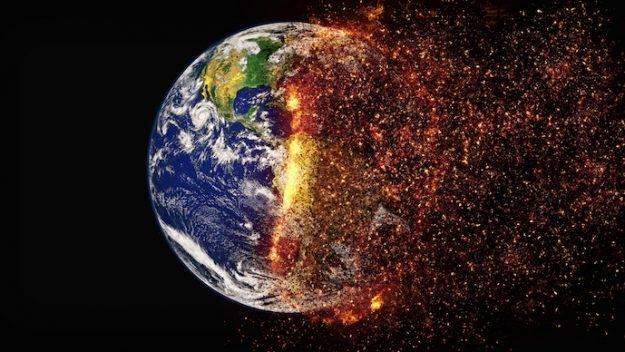Climate Change: Bigger Trees With Lesser Strength

The unabated climate change has led to an interesting phenomenon- more and more trees are growing faster and bigger, but their density is on a continuous decline. The decrease in wood density makes the trees lose their strength, making them vulnerable to wind, storm, snow,etc. Wood has been used for centuries,mainly for construction and fuel.However, weaker trees are surely going to impact the durability and utility of wood for such purposes.
A recent report revealed that the density of wood and hence,its strength is decreasing fora century. Based on the wood samples in Central Europe, they show that the area’s dominant trees like spruce, beech,and oak show a significant decrease in wood density by 8to 12 per centsince 1870, however, the number and size of treeshave increasedmanifold. The increase in temperature stimulates photosynthesis and the growing season for trees extends. Extension in the growing season combined with increased carbon dioxide in the air and improved nitrogen supply through atmospheric deposition havefacilitated the increase in the number of trees. The study identifies that nitrogen deposition in soil mainly due to the large use of agricultural fertilizers, and intheair, added byautomobile exhaust,isthe foremost cause for the decrease in wood density. Previous studies also show the linkage of increased fertilizer use to decreased wood density.
A longer growing season also means thattrees grow faster with a more profound impact on the city trees, which can grow faster as much as 25 per cent,in comparison to their rural relatives. This might sound good, that global warming can also have some positive impact.
But faster growth and getting bigger are not the only parameters to judge the effects of global warming on trees. A decrease in wood density, apart from making it weaker, also drops the carbon content of the trees. This results inadecrease in the capacity of carbon sequestration by the trees. Carbon sequestration is the process of removing carbon dioxide from the environment. A dropin the carbon sequestration capacity of the trees implies that they have been soaking lesser carbon dioxide from the environment. With industrialization and automobiles growing, carbon sequestration is critical for environmental balance. Trees being the most natural and easiest way to remove carbon dioxide from the environment, a reduction in their carbon sequestration properties is surely not a desirable trait. It hasalsobeen argued that an increase inthenumber of treesis directly proportional to biomass production. But the proportion of biomass production with respect to the increase in tree volume is found to be significantly less.
Get the latest reports & analysis with people's perspective on Protests, movements & deep analytical videos, discussions of the current affairs in your Telegram app. Subscribe to NewsClick's Telegram channel & get Real-Time updates on stories, as they get published on our website.























